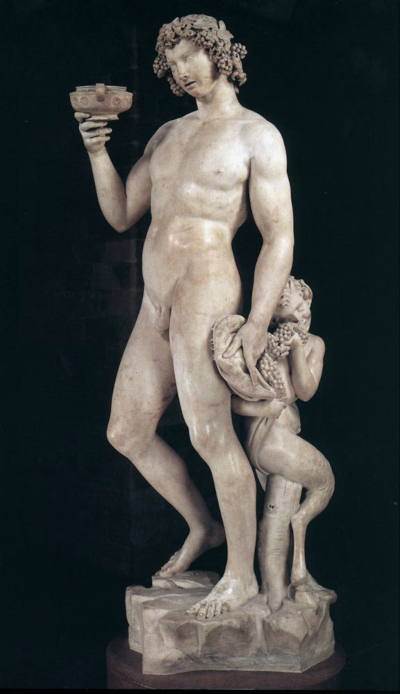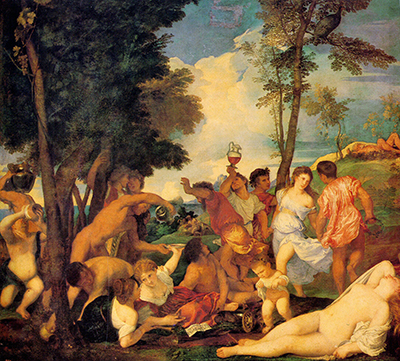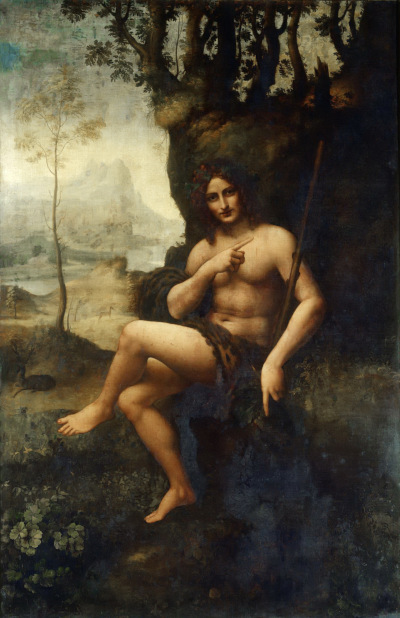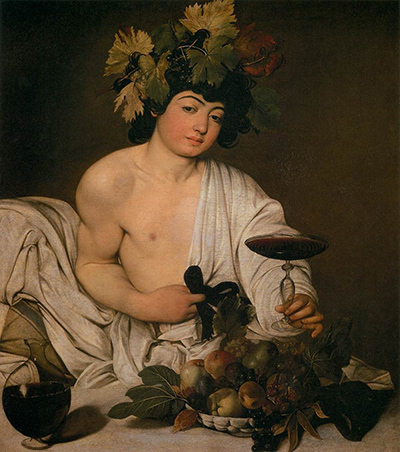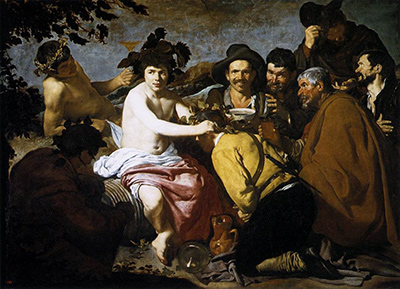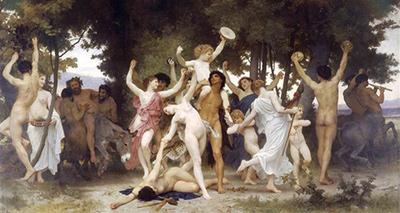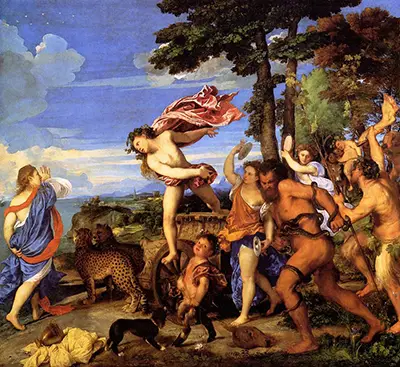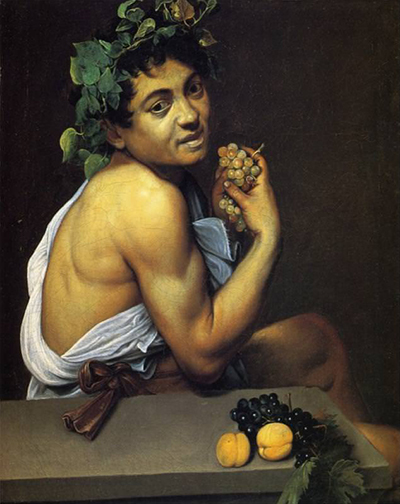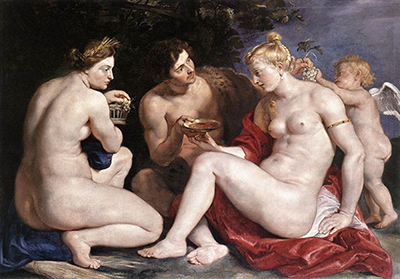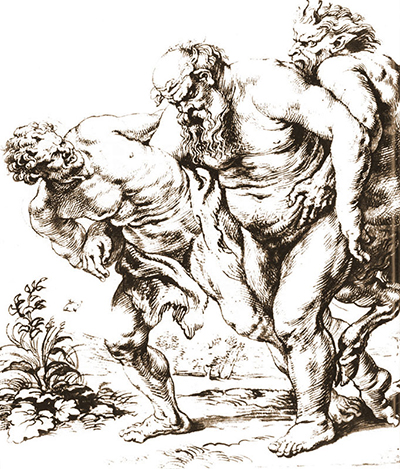Introduction
The great master was only in his very early twenties at the time that he produced Bacchus, but he was already working to a very high technical level. This famously arrogant individual could back up his attitude with breaktaking art, and he would develop his techniques within various artistic disciplines at a frightening speed. His ambitious nature would also pull him into other avenues of creative expression later in his career, such as painting, architecture and literature.
Bacchus therefore marks an important stage in his early development as a sculptor, featuring many of the qualities that became his hallmark within this medium. He would typically use marble, as found here, and was also highly regarded for his precise depiction of the human body, and in particular, the male figure. Much of this accuracy was derived from his talents as a draughtsman, though he had to practice regularly in order to fine tune these abilities.
Another aspect of this sculpture which was common throughout the rest of his oeuvre was in the inspiration for the piece - Michelangelo regularly called upon themes from classical history, as well as religious passages, on which to base his sculptures. He also studied classical sculpture within Italy, seeking to learn as much as he could from that highly respected genre. All of these ingredients, collectively, would ensure that Bacchus has become known as one of Michelangelo's most important and most famous sculptures of all.
Table of Contents
- Introduction
- Michelangelo's Move to Rome
- Bacchus Commission
- Who is Bacchus?
- Description of the Sculpture
- Famous Bacchus Paintings and Sculptures
- Who Purchased Michelangelo's Bacchus?
- Location, Size and Medium
Michelangelo's Move to Rome
Michelangelo moved to Rome on the on the 25th of June, 1496. Political instability within the country had forced him to relocate previously, due to his connection to the famous Medici family. Incredibly, just a few days after arriving in Rome, Michelangelo was awarded a commission to produce the Bacchus sculpture.
Whilst that piece was rejected by the original donor, and sold to a banker instead, it marked his arrival in Rome, and shortly afterwards he would begin work on another key part of his oeuvre, Pieta. Despite being only in his early twenties at this point, and entirely new to Roman life, we see an artist here who was able to gain respect immediately, helping him to acquire major commissions from an unusually young age.
Bacchus Commission
Shortly after arriving in Rome, on the 4th of July, 1496, Michelangelo was commissioned by Cardinal Raffaele Riario to produce a tall statue of Bacchus, the Roman god of wine, fruit, fertility and theatre, among other things. The Cardinal was responsible for inviting Michelangelo to Rome in the first place, and so it is unsurprising that his first commission arrived so soon after reaching the city. Despite ultimately rejected Michelangelo's work on this sculpture, forcing the young artist to sell the piece elsewhere, the cardinal's role in enticing him to Rome is still highly significant within the evolution of his career.
Cardinal Raffaele Riario's initial interest in Michelangelo was entirely understandable - he was a keen follower of Renaissance art, and particularly enjoyed Florentine sculpture. His tastes were relatively modern for the time, and so a young, ground-breaking Florentine sculptor such as Michelangelo would have appealed to him.
It is believed that Michelangelo's Sleeping Cupid was sold to him earlier in the year, under the label of being from classical times. He was able to identify this forgery, but also realised the brilliance of its creator, Michelangelo. He perhaps understood that Michelangelo deliberately aged the piece under the influence of the seller, and that he should not be held responsible for the deceit, but rather applauded for the impressive technical skills which the piece revealed.
Consequently, the cardinal kindly wrote to Michelangelo and challenged him to move to Rome and to produce works of his own, rather than continuing to copy others as had happened in the case of the Sleeping Cupid. Clearly, Michelangelo took up the challenge and relocated soon after receiving the letter. Many years later, Michelangelo would actually claim that it was not the cardinal who had actually commissioned the piece, perhaps attempting to save face, but multiple documents uncovered over the centuries provide strong evidence that the cardinal did initially request the piece, before presumably rejecting it and offering it for sale to the eventual purchaser.
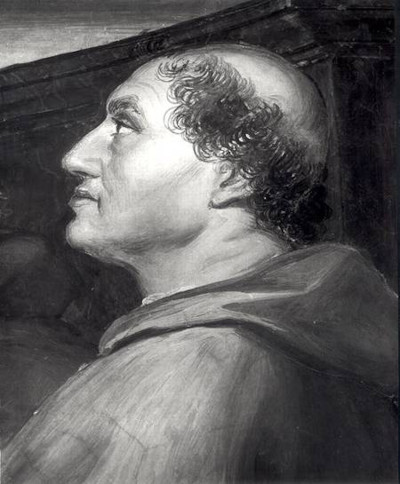 Cardinal Raffaele Riario (see image credits)
Cardinal Raffaele Riario (see image credits)
Who is Bacchus?
Bacchus is a figure from Ancient Greek mythology, where he is more often known as Dionysus. Michelangelo was therefore using the name used by Romans instead. Bacchus is the god of grape-harvest, winemaking, fertility, festivity, insanity, and theatre, among other things. Typically artists would choose one or two items from his life to represent within their portraits of Bacchus, and in Michelangelo's case he chose to focus on the god's connection to wine and drunkenness. It would be this connection to debauchery that ultimately persuaded the original commissioner, Cardinal Raffaele Riario, to reject the sculpture.
Bacchus is a legend from unknown roots, for he appeared in cultures even prior to the Greeks. Indeed, in different interpretations he is given various family connections to other gods, and so it would be down to each artist as to which version of this famous figure that they chose to draw inspiration from. These variations in story have also led to a great number of different meanings and symbolisms being connected to Bacchus, but Michelangelo chose to focus on the most famous of them all, namely the harvesting of grapes, and the enjoyment of wine and festivities.
Clearly, Michelangelo was far from the only Renaissance artist to include Bacchus within their oeuvre, and this famous God would also re-appear many times within the Baroque era that followed too. There is also a list of famous Bacchus paintings here, including work by the likes of Caravaggio, Rubens, Da Vinci, Titian and Velazquez. Some elements and sub-themes related to Bacchus would be re-used by artists, whilst also attempting to add their own style and innovations alongside in each of these independent artworks.
Roman Festival of Bacchanalia
Perhaps the biggest mark made by the legend of Bacchus was in the Roman festivals of Bacchanalia, which were run and organised in his honour. It is believed that these festivals arrived in Rome around 200 BC, and is how Italians became more aware of the story of Bacchus more generally. The festivals were cult-like in their nature, and were treated by authorities as a danger to the cohesion and health of society. They often involved hedonistic behaviour, including binges of wine, as inspired by Bacchus himself.
Description of the Sculpture
This tall statue is just above life-size, reaching over two metres in height. Michelangelo completed it over the period of around twelve months, and chose the original block of marble himself. The torso of Bacchus is typical of this sculptor, who typically gave his male figures slim, athletic builds. Bacchus's eyes are focused intently on the bowl of wine that he holds in his right hand, symbolising how he has lost his way and submitted to an extravagant lifestyle.
Analysis
Michelangelo angles Bacchus backwards, and this precarious posture represents his drunken antics. The two bodies featured within the work are typically smooth of surface, with much of the detail added around Bacchus' hair, which resemble grapes. Most of the main figure is entirely consistent with Michelangelo's male sculptures, and he certainly developed a look within his oeuvre which could be repeated, just with elements to identify each character alternated from one statue to the next.
Symbolism and Meaning
A close inspection of the piece reveals many details relating to the story of Bacchus. Most obvious is the drinking bowl in his right hand which identifies the figure as the god of wine. We then see his unsteady walk, which continues that connection. Additional detail to spot include the garland in his hair, made from ivy and vines, plus the stunted horns in his head. There is also a small satyr who accompanies Bacchus, lurking by his left leg and appearing to playfully chew on a bunch of grapes.
These items are believed to have been added by Michelangelo in order to remind us all of the dangers of leading a debaucherous lifestyle, where all desires are indulged, with little consideration for the consequences. Michelangelo's approach would have been heavily influenced by the way in which Bacchus had been represented by Renaissance in previous years, rather than any of the more classical approaches, many of which he may not have been familiar with.
Damage
A number of question marks regarding Bacchus remain. Sketches made of it shortly after it had been sold indicate that potentially an arm was missing, and it has not been yet determined as to how it was re-attached. It may have been that Michelangelo left the arm off entirely, or that it was there originally, before being broken off by accident. Michelangelo potentially may even have re-attached it - we simply do not know. Controversy also remains regarding Bacchus' penis, which is broken off and it is not known whether this was a part of Michelangelo's original design.
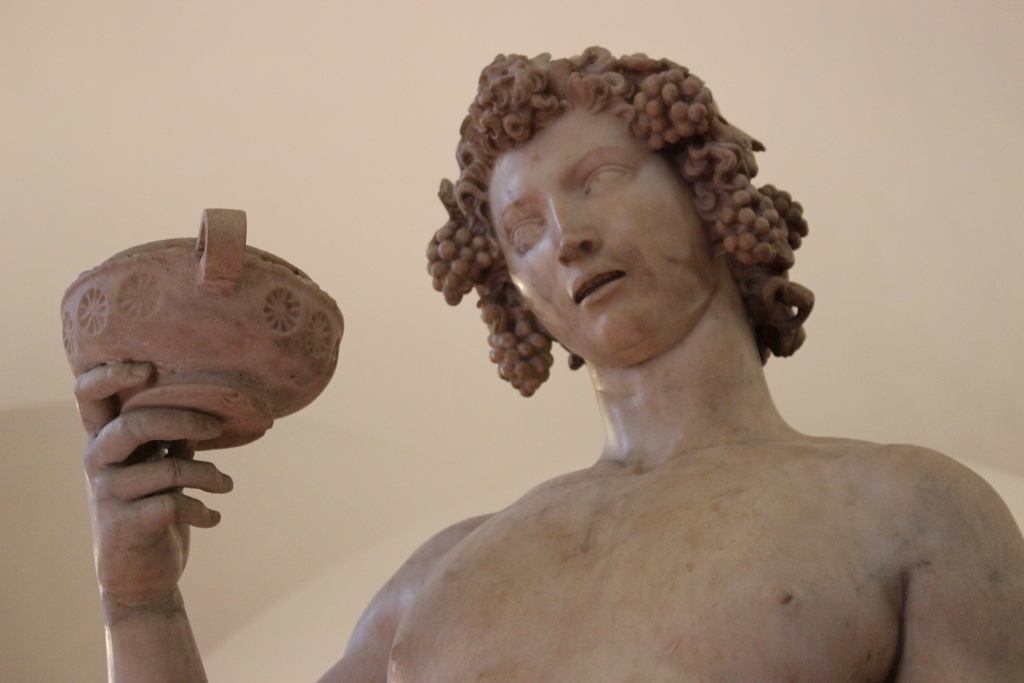 Close-Up of Bacchus (see image credits)
Close-Up of Bacchus (see image credits)
Facts
- Bacchus was created in 1497
- The sculpture was made entirely from marble
- Cardinal Raffaele Riario commissioned the work
- Michelangelo was in his early twenties when he made this piece
- Cardinal Raffaele Riario rejected the sculpture, allowing Jacopo Galli to buy it
- It is located today at the Bargello Museum in Florence
Famous Bacchus Paintings and Sculptures
Bacchus, or Dionysus, have appeared within western art for many centuries, with the earliest forms coming from around 1300 BC. These have included mosaics, sculptures, frescos and more, spread across a variety of different civilisations and cultures who have used this legend as inspiration for the visual arts. By the time that European Renaissance artists took on the story of Bacchus, many ideas had already been developed and evolved, creating something of a visual language that they could easily access for their own work.
In order to place Michelangelo's Bacchus sculpture into some sort of context, we have included below a number of other famous depictions of the same theme from around the same period. Additionally there are Baroque paintings too, plus a later work from French Realist painter, William-Adolphe Bouguereau. This wide survey allows us to compare the different ways in which highly skilled European artists have taken on the same subject.
Who Purchased Michelangelo's Bacchus?
Cardinal Raffaele Riario, the original commissioner for the Bacchus sculpture, ultimately decided to reject the piece, deeming it too sexually explicit and symbolic for his own tastes. It had been intended for his garden, hence the considerable size of it. Jacopo Galli was a banker and friend of both the artist and also the cardinal, and he would acquire the piece instead. The route that the piece took from completion to arriving in his garden is unclear, but records indicate the banker definitely owning the piece in 1506, and so he may have bought it immediately after Michelangelo completed it in around 1497.
Provenance
The Medici family, who were heavily involved in Michelangelo's career, eventually purchased the piece (Francesco I de' Medici) in 1571/1572, and soon afterwards it would be taken to the city of Florence, where it remains today. It would intially be display at the Uffizi Gallery, before then being relocated to the Bargello in 1865, where it remains today.
Location, Size and Medium
Michelangelo's Bacchus is 203 cm in height, or 184 cm minus the base. It was produced entirely in marble and can today be found located at the Museo Nazionale del Bargello, also known as the Bargello National Museum, which is based in the Italian city of Florence. This respected venue counts the Michelangelo sculpture as one of its highlights, but also offers work by other great names from the Renaissance including Luca della Robbia, Lorenzo Ghiberti, Filippo Brunelleschi and Donatello.
Image Credits
We have sources a number of images from Wikimedia for this article's content and details of each of them, along with their specific licences, are included below. All contributions to Wikimedia are much appreciated, and we encourage you to look at the original images as linked to below, as well as the users who have taken the time to add them.
Bacchus, 1496–1497 by Michelangelo, public domain photograph of the sculpture; source: Attilios, uploaded by Meidosensei, Public Domain, via Wikimedia Commons
Baco Miguel Ángel 02.jpg, 1496–1497 by Michelangelo, Close-up of Bacchus' head; Miguel Hermoso Cuesta, CC BY-SA 4.0, via Wikimedia Commons
Raffaele Riario, portrait by Raphael; uploaded by Юрий Олещук, Public Domain, via Wikimedia Commons
Bibliography
- Images sourced from Wikimedia under a variety of Creative Commons licenses. Further details regarding the particular license used, the location of the original image on Wikimedia and the original author/user are provided on each specific page.
- Michelangelo, Gilles Néret
- Vasari's Lives of the Artists, Giorgio Vasari
- Michelangelo. The Complete Works. Paintings, Sculptures, Architecture, Frank Zöllner, Christof Thoenes
- Michelangelo and the Sistine Chapel, Andrew Graham-Dixon


